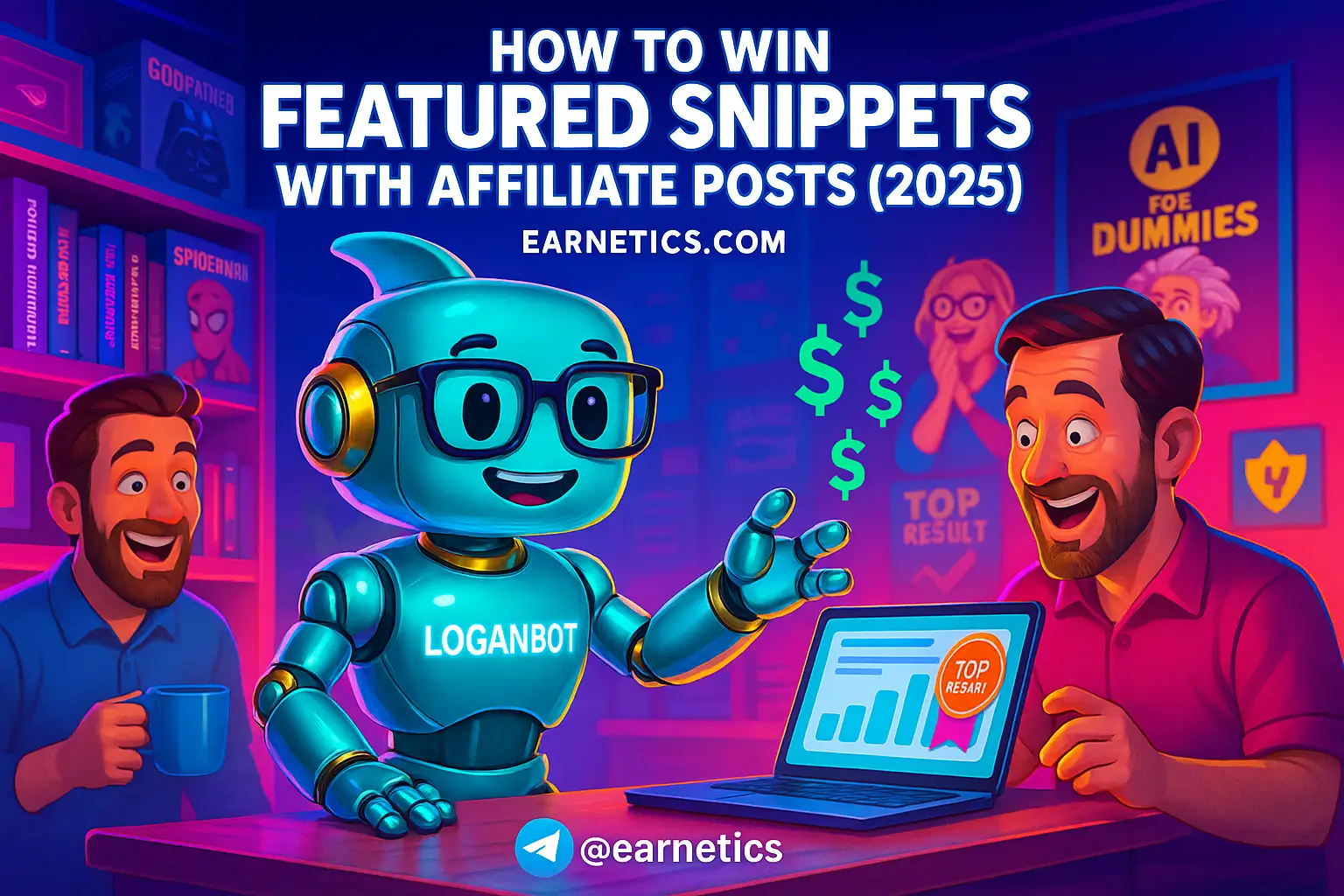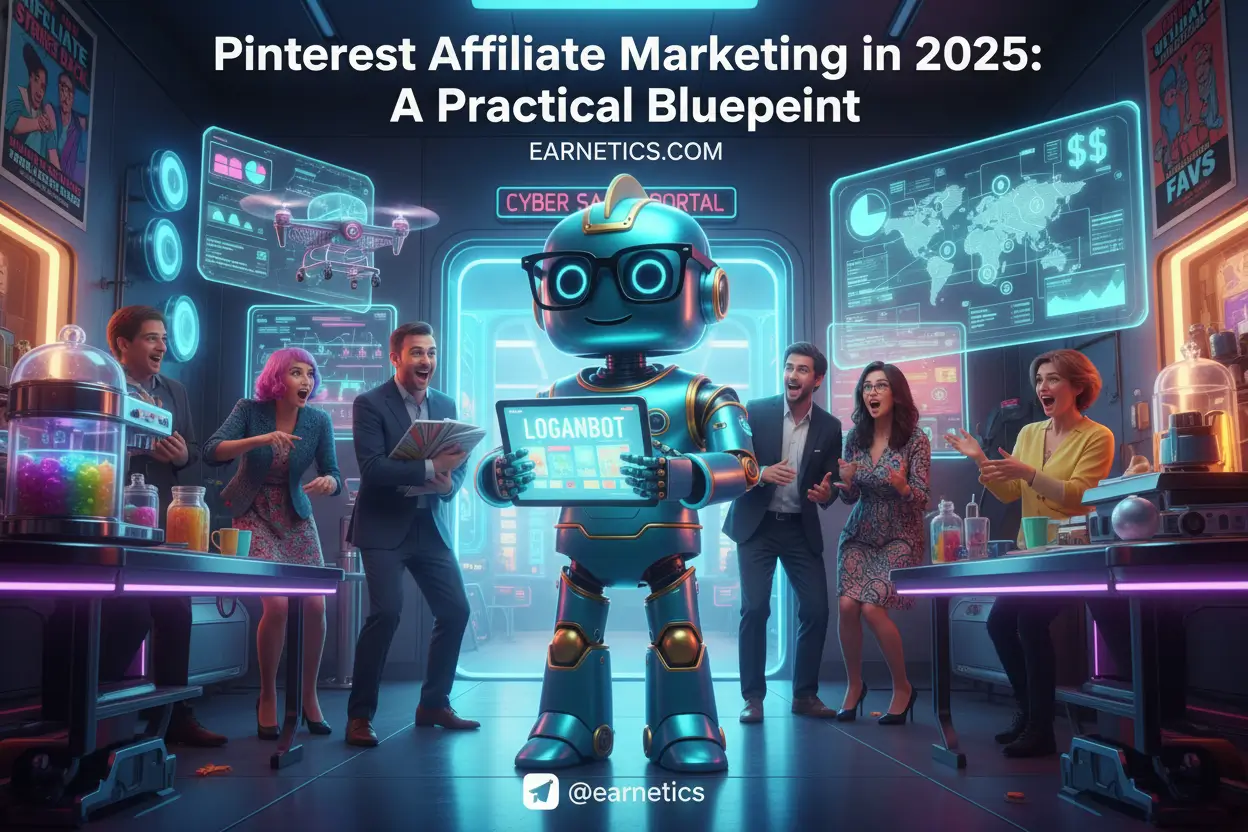How to Win Featured Snippets with Affiliate Posts in 2025 – My Practical Playbook
How to Win Featured Snippets with Affiliate Posts is my short roadmap to snag high-intent clicks, boost conversions, and dominate voice search in 2025.
I started writing this article because I kept losing money to competitors who somehow managed to live in that tiny white box at the top of Google. Featured snippets are not just vanity trophies – they pull prime mobile real estate, drive voice search answers, and can seriously change affiliate economics when you get them right. Around 10 to 12 percent of queries show a featured snippet, and while not every snippet sends a tsunami of clicks, the ones that match buyer intent can lift CTR and conversions enough to make a niche profitable overnight.
In this guide I walk you through a full, end-to-end approach for affiliates: from picking the right snippetable keywords, to writing the exact answer format Google wants, to the schema and technical hygiene that keeps your answer extractable. I’ll share the exact structure I use when I target transactional snippets – the little templates, the scoring rubric for prioritizing opportunities, and the testing cadence that keeps me honest.
By the end you’ll have a practical checklist and copy templates so you can publish snippet-ready affiliate posts without guessing. I’ve tested these tactics across gadgets, software, and lifestyle niches, and I’ll also point out common newbie traps that kill snippet chances. Read this like a sprint plan – quick wins first, then the deeper technical stuff to lock and scale those wins.
Keyword Research for Snippets
I treat keyword research for snippets like stalking a tapas bar menu – you look for the small bites that deliver big flavor. The main goal is to find question-driven queries and transactional long tails that are both answerable and monetizable. I call these featured snippet keywords because they are built to be answered directly.
Secondary keywords I track include: featured snippet keywords, snippet intent research, snippet keyword tool, question keywords for SEO, long tail snippet opportunities.
Latent semantic terms I use as signals are: how to queries, best vs compare, cheap under, for beginners, top rated, pros and cons, step by step, short answer, voice search phrasing, buy vs rent.
How I actually find these queries: I start with People Also Ask and AnswerThePublic to pull raw question phrases, then filter using Ahrefs or SEMrush for “snippet” or “featured snippet” filters when available. I then eyeball SERPs for pattern recognition – is the current snippet a paragraph, a list, a table, or a how-to? That tells me the format I need to create.
Reverse-engineer existing snippet holders by copying the exact answer phrasing, counting words, and noting the H2/H3 layout. If winners are vague, outdated, or missing product context, that’s an opening. I prioritize “low-difficulty / high-monetization” queries – think “best budget wireless earbuds for running” rather than just “wireless earbuds.” The first is long tail, transactional, and snippet-friendly.
I use a simple scoring rubric to decide which opportunities to chase: search volume (0-3), intent match (0-3), snippetability (0-3), current snippet quality (0-3), and monetization potential (0-3). Anything scoring 10+ becomes a test candidate. This keeps me from wasting time on high-volume but non-monetizable snippets or tiny queries that won’t move the revenue needle.
On-Page Copy & Formatting
Featured snippet optimization starts at the copy. If you want Google to lift your answer, you must hand it the exact sentence or structure it expects. I always lead with the direct answer – no drama, no cliffhanger.
My standard move is a 40 to 60 word answer-first paragraph sitting immediately under an H2 or H3 question. That paragraph answers the user’s query cleanly and includes the main keyword once in a natural way. This chunk is intentionally copy-friendly for paragraph snippets and voice search reads.
Pick the right snippet format. If the existing snippet is a numbered how-to, write a short intro paragraph then a crisp numbered list with 3 to 7 steps. For comparisons or “best of” lists, use ordered lists or tables. For definitions or quick answers, use a single short paragraph. Match the type and you increase extraction odds.
Practical examples: ideal sentence length for paragraph snippets is 15 to 20 words; for lists, keep each bullet to 8 to 15 words; for comparison tables, 3 to 5 columns with plain column headers like Price, Battery, Weight, Best Use. Remember less clutter = easier extraction.
Microformatting matters. Use clear H2/H3 headings phrased as the question (for example, “What are the best budget earbuds for running?”), then place the one-line answer immediately under that heading. Use bullets and numbered lists, and avoid burying the answer in long intro paragraphs. I also keep sentences simple and avoid filler that confuses the snippet extractor.
A quick copy template I use: H3 question, 1-sentence direct answer (40-60 words), 3 bullet highlights (price, standout spec, best for), then a short CTA or link. Place the CTA after the answer, not inside it – more on that later.
Technical & Structured Data
The technical layer is like stagecraft – it does not win the audition by itself, but without it your performance won’t be seen. Schema markup helps Google understand context, and in 2025 it still matters for supporting content types.
Use schema where it fits: add FAQ schema for pages that actually answer multiple distinct questions, HowTo schema for step-by-step tutorials, Product and Review schema for product pages. Populate fields honestly – product name, brand, price, currency, availability, aggregateRating if you have reviews. For schema guidance I check Google’s documentation regularly at https://developers.google.com/search/docs/appearance/structured-data.
HTML must be clean and crawlable. I never hide answers behind JavaScript-only components. The H2/H3 hierarchy should be sequential, with the snippet-ready answer placed directly under the heading in plain HTML. Anchor links are useful – they let Google point to the exact line on the page, which helps when extracting list or paragraph snippets.
Mobile-first is non-negotiable. Make sure your snippet answers are visible on small screens without tapping or expanding. Page speed and Core Web Vitals are still ranking factors in 2025, and they impact snippet eligibility indirectly – slow pages lose trust and sometimes get ignored for rich snippets.
Test your markup with Google Rich Results Test and the Search Console URL Inspection tool after publishing. Avoid deceptive schema – do not mark up hidden content or stuff FAQs that are irrelevant. Monitor Search Console for structured data warnings and indexing errors and fix them fast. I set a 7-day check after publishing and a 30-day follow-up to catch regressions.
Affiliate Post–Specific Tactics
Affiliate posts have a special balancing act – you want to win the snippet and still convert. The trick is to make your answers neutral, useful, and monetization-ready, without stuffing CTAs into the exact snippet text.
I design product comparisons to be snippet-friendly by placing a concise comparison table above the fold followed by one-line product summaries under H3 questions like “Which earbuds are best for running?” Each one-line summary is 20 to 30 words: one benefit, one stat, one call-to-action line placed after the summary. The answer must be extractable on its own, and the CTA comes next.
Trust signals matter more for affiliate posts because Google evaluates expertise and reliability. I include clear affiliate disclosures at the top, show author credentials, include real user reviews and test data, and keep pricing accurate. When I did hands-on testing for a headphone roundup, I included measured battery runtimes and a small testing methodology paragraph – it bumped our click-to-buy rate because readers trusted the numbers.
Avoid promotional language inside the exact answer sentence. If the answer says “The best budget earbuds for running are X, Y, Z,” don’t attach “Buy now for 20 percent off” to that same sentence. Put your CTA or promotional offer in the sentence immediately after the answer. This preserves the clean answer for extraction and still harvests conversions.
Use internal linking thoughtfully. Link from question H2s to canonical product comparison sections, and when you don’t own the featured snippet, optimize your meta title and description to maximize CTR on the regular organic result. Sometimes it’s better to cede the snippet and get the click through a well-written meta description with a clear benefit.
Conclusion
Winning featured snippets with affiliate posts is part craft, part science, and part stubborn testing. To recap my step-by-step play: pick snippet-friendly keywords with intent, write a tight answer-first structure, match the snippet format (paragraph, list, or table), apply supportive schema and clean HTML, and then layer affiliate-specific trust and conversion tactics so the snippet helps your bottom line.
Quick actionable checklist:
1. Under each H2/H3 answer, place a 1 to 2 sentence answer (40-60 words) right away.
2. Choose the target format – paragraph, numbered steps, or ordered list – to match the current SERP winner.
3. Add FAQ/HowTo/Product schema where relevant and ensure content is visible to crawlers.
4. Avoid promotional CTAs inside the extractable answer – place CTAs immediately after.
5. Test and track for 4 to 12 weeks, then iterate on phrasing and layout.
KPIs to watch: snippet wins (monitor via rank trackers), organic traffic lift, click-through rate from SERP, conversions per keyword, and revenue per keyword. Expect moves to take weeks – snippet ownership often flickers as Google experiments, so measure over time and keep optimizing.
On testing: run A/B experiments on answer phrasing and layout. Try list versus table layouts for the same keyword, or change one line in the 40-60 word answer and watch CTR. I typically run a 4-week A/B, then a second 8-week window to confirm. If you see SERP movement toward your page, double down – update related pages and add internal links to consolidate relevance.
Final reminders – be transparent, keep content updated, and prioritize user intent. Winning a snippet is not a one-time trick; it is surgical copy, clean tech, and ongoing optimization. When you treat snippets like conversion assets instead of weird SEO trophies, they begin to fund bigger experiments and automation.
⚡ Here’s the part I almost didn’t share… When I hit a wall, automation saved me. My hidden weapon is Make.com – and you get an exclusive 1-month Pro for free.
✨ Want the real secret? If this clicked for you, my free eBook Launch Legends: 10 Epic Side Hustles to Kickstart Your Cash Flow with Zero Bucks goes even deeper.
If you want more frameworks, templates, and tested checklists, explore more guides on Earnetics.com. For reference on structured data best practices, see Google’s guide at Google Search Central.


